Camp DIY: How To String a Lacrosse Head
The following instructions are for lacrosse mid-pocket heads for men’s lacrosse. This is the best pocket for attackmen, midfielders, and defensive players.
Did you know that the original laxers went as far back as 1100 A.D.? They built their own sticks from wood, leather, and other animal byproducts. The stringing resembled something like a large, egg-shaped fishing net with intricate knots that must have taken many days to complete. Since that time, head net stringing became a type of sports-based art form, with various techniques passed down for centuries.
While lacrosse head stringing is still an art form for many players, a lacrosse head stringing may be completed in under 1 hour with a little patience and attention to detail.

Let’s start with the basic elements of a lax stick stringing kit:
Mesh
You’ll want to look for a 9D, or 9 diamond, mesh. This is the pre-knotted piece that makes the pocket.
The shape of the mesh. This controls how the ball sits in the head.
Low pockets sit very close to the throat of the lax stick, for easier cradling and dodging with one-handed play.
Mid Pockets are the most common, and best for any position. This style allows a lot of versatility with ball control and speed. For the purposed of this tutorial, we are going to use a Mid Pocket setup.
High Pockets are used most often by defensive lacrosse players for control, covering ground balls, and making high or low shots on goal.
Sidewall
The long side of the head. These strings run along the sides of your lacrosse head.
Scoop
The top of the head
Shooting Strings
Shooting strings look like shoelaces. They are used to control how the ball comes out of the head when throwing or shooting.
Before you get started on stringing your lacrosse head, assemble your materials.
Here are some items you’ll need:
- A mesh stringing kit. This includes:
- 1 Mesh
- 4-5 Sidewall nylon strings
- 2 Shooting strings
- 2-3 Shooting laces
- 1 Bottom lace
- 1 Bottom string
- 1 Screw
- You’ll also need:
- The unstrung lacrosse head
- 1 Lacrosse ball
- Needle nose pliers
- Lighter (please ask an adult to help you)
- Scissors
Step 1 – The Mesh

Stretch out the mesh that comes with your kit. For a hard mesh, run the material under hot water while stretching it out for best results. Don’t skip this step! If you don’t stretch your lacrosse mesh, it will stretch eventually — in a way you didn’t intend.
Meshes feature holes that are called diamonds. Each row of the mesh has 9 diamonds across, or 10 diamonds across.
Step 2 – The Top String

The top string is considered the foundation of your lacrosse stick. This string aligns the channel, and requires a symmetric, tight and even lacing. If the top string is loose, the pocket will also become loose and unreliable. If the top string is laced unevenly, your pocket will be crooked. This will result in erratic shooting and passing.
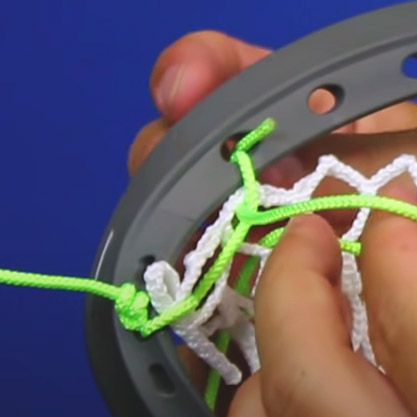
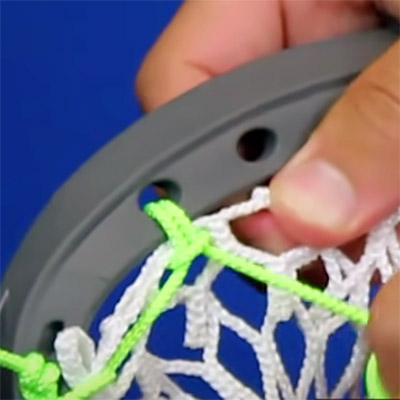
Step 3 – Basic Sidewall Strings

Please Note: Different lax stick heads have varying numbers of sidewall holes. If you have a head with fewer sidewall holes, this pattern will lead to more channel.

Important: Breaking in the mesh both before and after you string it is going to have a much better result.
You will need 4 basic knots for stringing a lacrosse sidewall:
- Anchor Knot
- Knotted Standard Interlock (SI)
- Stacked SI
- Double Overhand Knot
Now that we have the knots outlined, let’s get to stringing…
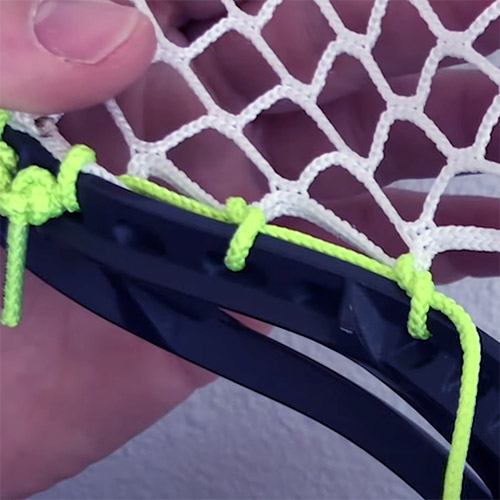
lax-head-side-knot-1_500x500
Anchor Knot with Knotted Standard Interlock (SI)
Tip: Aim to pull the mesh down and toward the inside of the head as you work the side strings.
Check your progress.
It’s time to double up! This is a tricky step, so be patient.
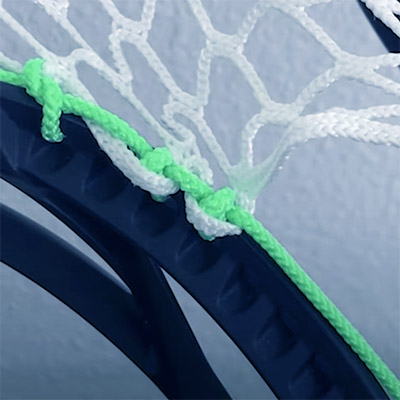
lax-head-side-knot-4_400x400
Double Up Side Knot
Get ready for the Stacked SI knot…
The Stacked SI knot has been a secret weapon for lax players who want more control on their passing or shooting whip.
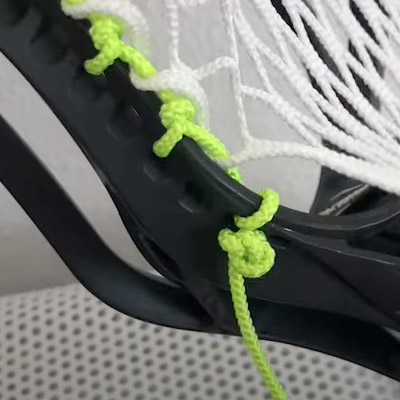
lax-head-side-knot-final_400x400
Final Side Knot
Step 4 – The Pocket

- 1Once you complete the left and right sidewalls, a pocket will start to form. Keep the mesh stretchable by wetting it with warm water.
- 2Pick up your lacrosse ball, and throw it in and out of the head on both sides to break the mesh in.
Pro Tip: Place the lacrosse ball in the mesh, and hold it in place by sliding a wooden spoon or butter knife across the face of the head. Leave it in place 10 to 60 minutes to create a really nice pocket. Don’t worry if it seems too deep at first. We will adjust this with the bottom string.
Step 5 – The Bottom Lace
(aka the Throat Lace)

Tip: At this point you should have 2 symmetrical loops at the bottom of your lacrosse head
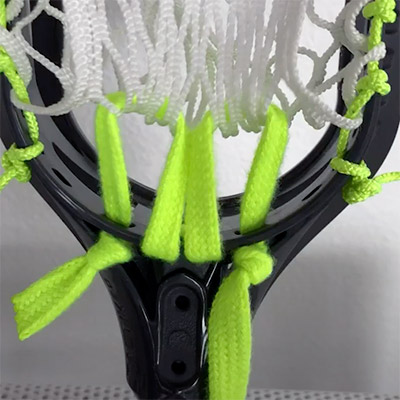
lax-head-bottom-knot-1
Bottom Knot Completion
Step 6 – Lace Your Shooters

Pro Tip: Shooter laces help you customize the way you throw and shoot the ball. They must be laced within 4 inches from the top of the scoop.
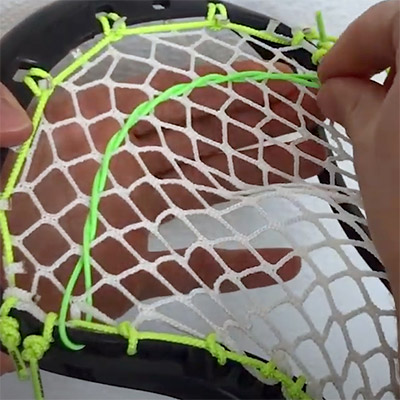
lax-head-shooter-1
The Shooter String
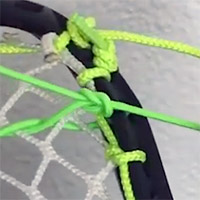
lax-head-shooter-2
Square Knot
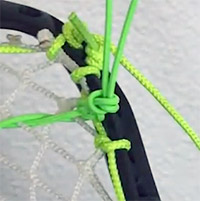
lax-head-shooter-3
Double Overhand Knot
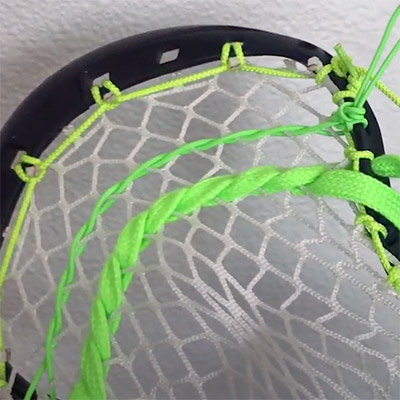
lax-head-shooter-4
Shooter Lace
Pro Tip: Test your strings! Loosen the shooter strings if you feel the ball is coming out too early (too much whip). Tighten them if you want to increase your whip.
Testing your strings will also help you break the pocket in while improving your stick skills.
This tutorial is a template for you to get started, but different heads may require different methods.
Contact our lacrosse coaching staff if you need more assistance in preparation for lax camp.
